“Got an app idea? Let’s build the future one tap at a time!”
Introduction
Let’s cut to the chase: in 2025, not having a killer app is like not having a website in the early 2000s—your competitors will eat your lunch. Mobile app development has gone from optional to essential, driving how businesses connect, sell, and grow. Customers expect seamless, fast, and innovative apps—and if you can’t deliver, they’ll find someone who will.
The market is booming, with app development companies and cutting-edge mobile software leading the charge. But with so many choices, how do you pick the best app developers or the top mobile app development companies and software solutions? How do you find the best mobile app development software for startups or enterprises without wasting time and money?
This guide breaks it all down: why mobile apps matter, where the industry is heading, and how to choose the right mobile app development company and software to stay ahead. It’s your no-nonsense roadmap to dominating the mobile-first era. Let’s get started!
Why Mobile App Development Matters
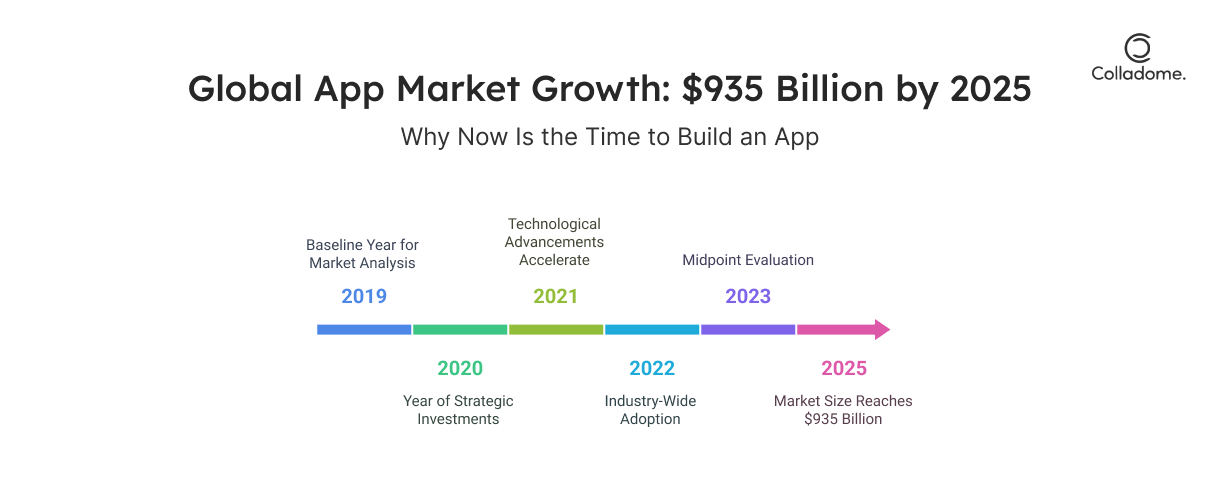
If you’re not investing in mobile app development in 2025, you’re already falling behind. Here’s why apps are essential to business growth, customer engagement, and staying competitive:
1. Massive Market Demand: The Billion-Dollar Opportunity
- The global mobile app market is projected to reach $935 billion by 2025 (Statista).
- Advances in 5G and AI-powered mobile software are driving explosive growth.
- App development companies are delivering innovative solutions to meet this unprecedented demand.
2. Unmatched Business Growth Potential
- 90% of smartphone usage is spent on apps, not websites or social media.
- Mobile apps are critical for customer engagement, brand visibility, and revenue generation.
- Businesses using the best mobile app development software for startups or enterprises are seeing exponential returns.
3. Hyper-Personalization: Give Customers What They Crave
- Apps offer unmatched user-centric solutions, tailoring experiences to individual preferences.
- Features like AI-based recommendations and seamless interfaces turn casual users into loyal customers.
- Top mobile app development companies and software solutions help businesses stay ahead in this personalization game.
4. Competitive Advantage: Stand Out or Get Left Behind
- The app space is crowded, but the right app makes you unforgettable.
- Partnering with the best app developers and leveraging innovative mobile software ensures you outshine competitors.
- Apps don’t just keep you in the game—they make you a market leader.
5. Innovation Meets Convenience: The Future is Now
- Cutting-edge technologies like AI, AR, and blockchain are revolutionizing apps.
- App development companies are using these tools to create apps that aren’t just functional—they’re transformative.
- With the right investments, your app becomes a solution that customers didn’t even know they needed.
What: Key Concepts of Mobile App Development
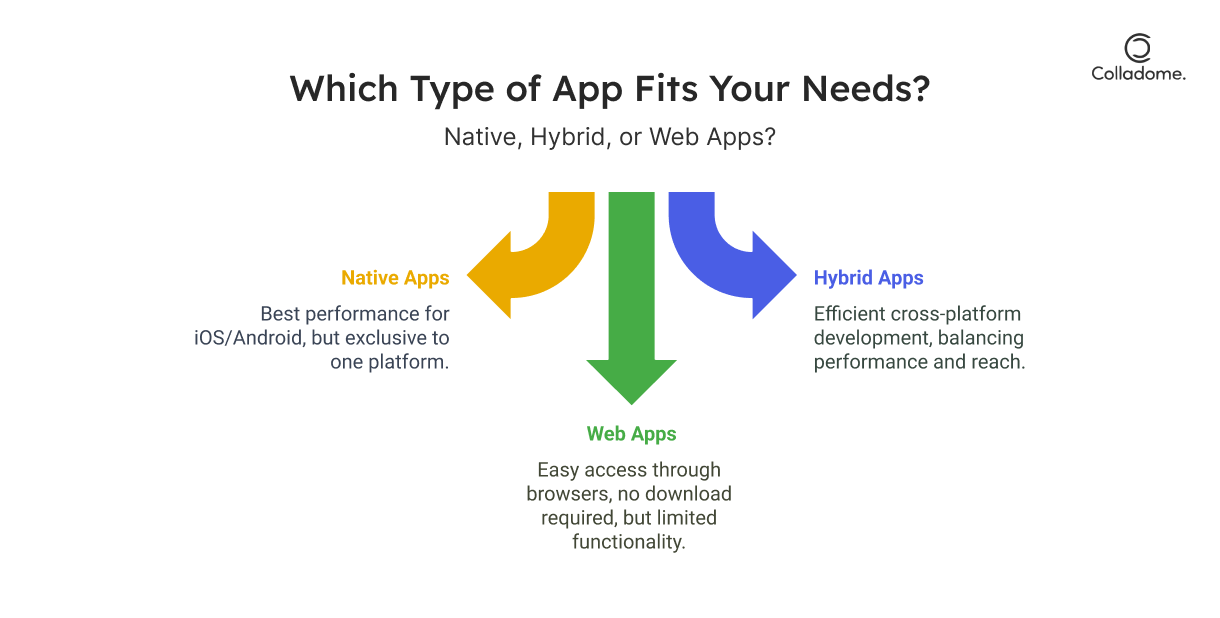
Understanding the ins and outs of mobile app development isn’t just helpful—it’s essential if you want to stay ahead in 2025. From the basics to emerging trends, here’s everything you need to know to master this dynamic field.
1. What Is Mobile App Development?
Let’s start with the foundation. Mobile app development is the art (and science) of creating software applications specifically designed for mobile devices. Whether it’s the addictive games you can’t stop playing or the eCommerce apps where you spend your paycheck, every app starts with a purpose-driven development process.
-
The Three Big Players
- Native Apps: Built specifically for a single platform like iOS (Swift) or Android (Kotlin). They’re fast, reliable, and offer a polished user experience, but they can be pricey.
- Web Apps: Accessible through a browser, they’re cost-effective but lack the finesse of native apps.
- Hybrid Apps: A mix of both worlds—easier to develop, but performance can be hit-or-miss.
Want to know the secret? The best app developers always choose the type of app that aligns with your business goals, budget, and user expectations.
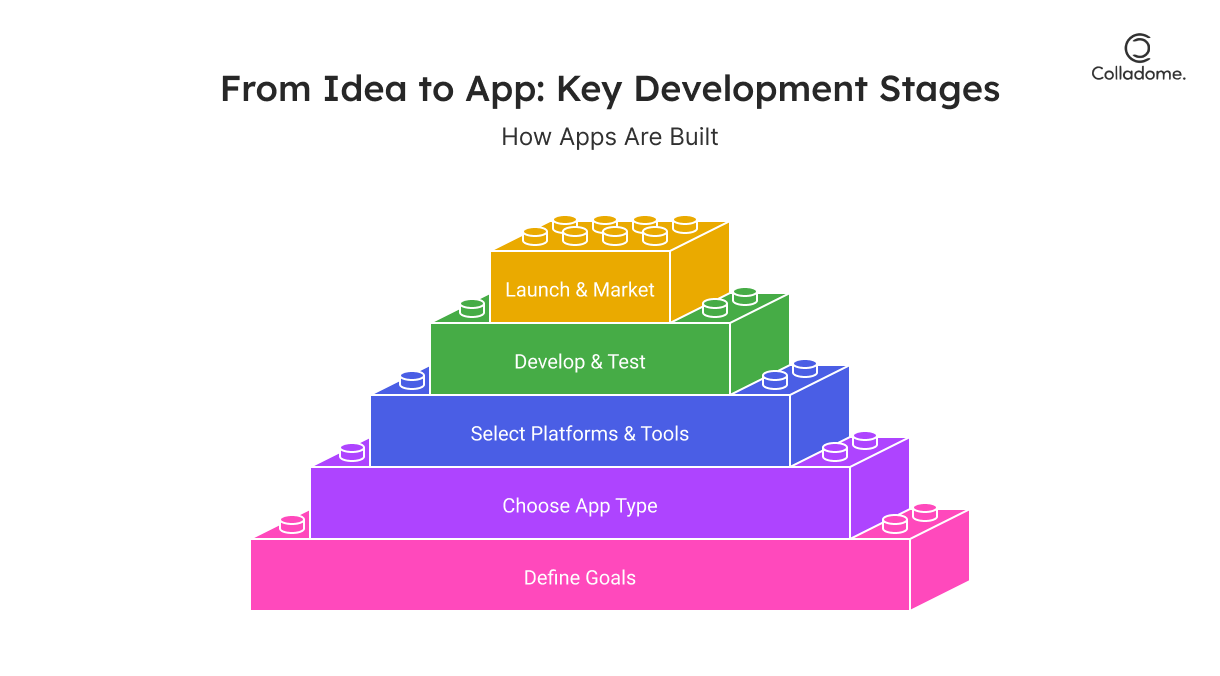
2. The Ecosystem: What It Takes to Build an App
Creating an app isn’t just about coding—it’s about assembling an intricate ecosystem where platforms, languages, and tools work together seamlessly.
-
Platforms: iOS, Android, and Cross-Platform
- Apple’s iOS is the luxury sedan of platforms—sleek, secure, and preferred by premium users.
- Android dominates the global market, giving you massive reach and flexibility.
- Cross-platform frameworks like Flutter and React Native are the new favorites, letting you build one app for both worlds.
-
Languages: Swift, Kotlin, and JavaScript Frameworks
- For iOS, Swift reigns supreme with its fast performance and modern syntax.
- Android thrives on Kotlin, a developer favorite for its reliability and ease of use.
- For web or hybrid apps, JavaScript frameworks like React and AngularJS lead the pack.
-
Tools of the Trade: IDEs and More
- Xcode (for iOS) and Android Studio are the go-to Integrated Development Environments (IDEs).
- Pro tip: The top mobile app development companies and software solutions swear by these tools to streamline coding, testing, and debugging.
3. Emerging Trends in Mobile App Development for 2025
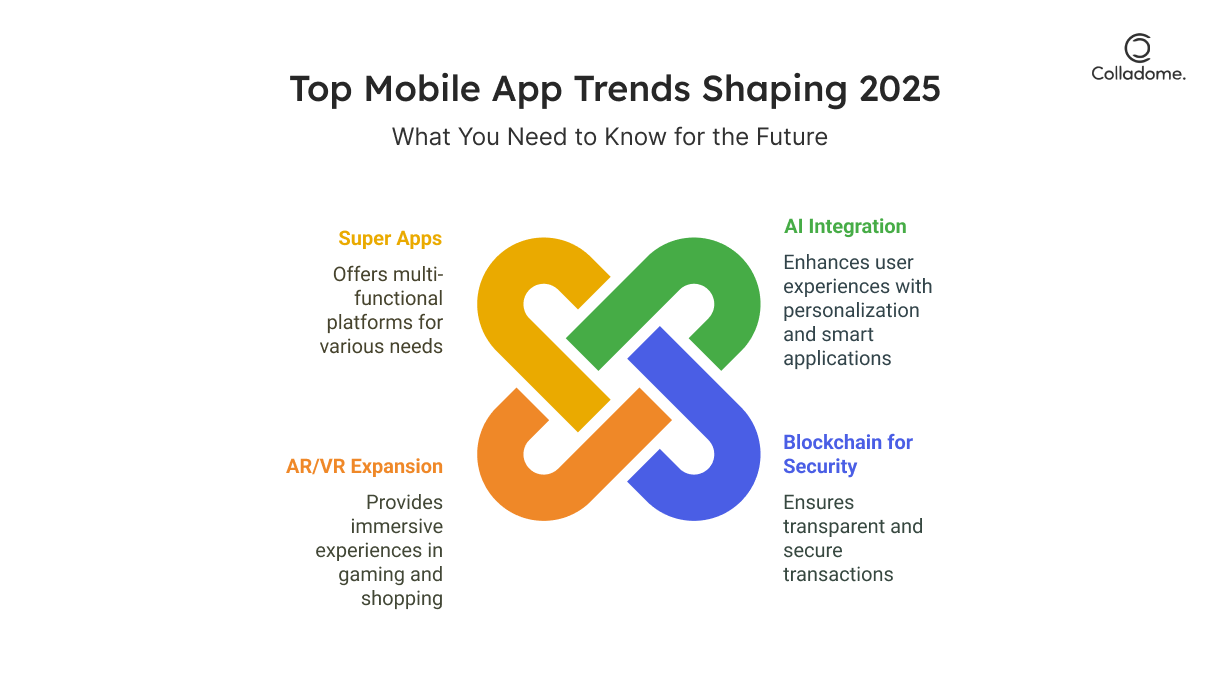
Here’s where it gets exciting. The world of mobile software is evolving faster than ever, and these trends are shaping the future:
-
AI-Powered Apps: The Smartest Apps Yet
- Predictive analytics, chatbots, and voice assistants are no longer luxuries—they’re must-haves.
- From personalized shopping to health monitoring, AI-powered mobile software enhances user experiences like never before.
-
Blockchain Technology: Secure and Transparent
- Need secure payment gateways or tamper-proof data sharing? Blockchain-powered apps are the answer.
- Whether you’re a startup or enterprise, leveraging blockchain can add a layer of trust to your business.
-
AR/VR Integration: Immersive Experiences Redefined
- Think beyond Pokémon Go—Augmented Reality (AR) and Virtual Reality (VR) are transforming industries like gaming, education, and eCommerce.
- These apps aren’t just fun—they’re memorable, making users come back for more.
-
Super Apps: The Swiss Army Knife of Apps
- Why have five apps when you can have one? Super apps (think WeChat or Paytm) combine messaging, payments, shopping, and more into a single platform.
As the best mobile app development software for startups evolves, expect super apps to dominate global markets.
| Concept | What It Means | Why It’s Cool |
| Native Apps | Built for iOS or Android with Swift/Kotlin. | Super smooth, lightning fast, VIP-level user experience. |
| Web Apps | Accessed via a browser—no downloads needed. | Easy, cheap, and gets the job done. The app world’s no-frills option. |
| Hybrid Apps | One app, two platforms (thank you, React!). | Budget-friendly, versatile, and startup-approved. |
| AI Apps | Think smarter, not harder. | Predicts, personalizes, and wows your users. |
| Blockchain | Securing payments and data like a vault. | Builds trust. Plus, “blockchain” sounds fancy and legit. |
| AR/VR | Immersive apps for gaming, shopping, and more. | Why swipe when you can explore? It’s the future, and it’s fun. |
| Super Apps | All-in-one giants like WeChat. | One app to rule them all. Users stay hooked, businesses rake in the cash. |
How to Choose the Right Mobile App Development Company and Software
In the wild world of mobile app development, choosing the right partners can make or break your app’s success. Here’s a no-nonsense guide to picking the best app development companies and mobile software for your business needs.
1. Start with Clarity: Identifying Needs
- What’s the Goal?
Are you aiming for user engagement, revenue generation, or just flexing your digital presence? Define clear objectives so your app isn’t just another shiny icon on someone’s phone.- Example: A fitness app? Focus on engagement and retention. A retail app? Monetization is king.
- Know Your People
Dive deep into your target audience. What do they want, and how do they behave? If your users crave convenience, don’t drown them in clunky navigation. Prioritize personalization and simplicity.
Pro Tip: A well-defined goal + a clear audience = an app that hits home. Skipping this step? Might as well burn your budget.
2. Evaluate App Development Companies Like a Pro
Finding the best app developers is like dating—you need to find “the one” that gets you. Here are top picks for 2025:
- Top Indian App Development Companies
- Infosys: A behemoth in scalable, secure, and enterprise-friendly apps.
- Hyperlink InfoSystem: Masters of intuitive UI/UX design and innovative solutions.
- Global Heavyweights
- WillowTree (USA): Known for apps that prioritize user satisfaction—think smooth, intuitive, and beautiful.
- ScienceSoft (Europe): The tech whisperers for AI-driven and IoT-integrated apps.
Pro Tip: Check portfolios, client reviews, and most importantly—ensure they understand your business goals. A great developer isn’t just a coder; they’re a partner.
3. Pick the Perfect Mobile Software
Choosing the right mobile software is just as critical as finding the right developer. Here’s the breakdown:
- For Startups:
- Flutter: Google-backed, fast, and budget-friendly for both Android and iOS.
- React Native: The king of cross-platform development. Great for MVPs and speedy launches.
- For Enterprises:
- Xamarin: Microsoft’s robust tool for scalable apps with high performance.
- Unity: Perfect for apps needing immersive 3D experiences (hello, AR/VR).
- For Quick Prototyping:
- OutSystems and Mendix: Low-code platforms that save time without compromising functionality. Great for small teams or tight deadlines.
Pro Insight: Startups should lean into agile, cost-effective solutions, while enterprises need powerful tools that scale without breaking.
Why It Matters
- Your choices define success. The right app development companies and mobile software ensure your app isn’t just functional but unforgettable.
- Shortcut to Glory: Combine expertise with cutting-edge tools like AI, blockchain, and AR/VR for an app that wows.
| Company/Software | What Makes Them Stand Out | Why You’ll Love Them |
| Hyperlink InfoSystem | Masters of creative UI/UX design | Want apps that look and feel amazing? They deliver eye-catching designs at budget-friendly prices. |
| WillowTree | Tailored, personalized app solutions | Known for flawless performance and user-first design, they craft apps that keep users coming back. |
| Flutter | Cross-platform genius backed by Google | Launch apps faster with one codebase for Android and iOS, saving time and slashing costs. |
| React Native | Delivers native-like performance at a fraction of the cost | Perfect for startups—quick, efficient, and gives your app that “built-for-iPhone” feel. |
Real-Time Success Stories

Indian Success Stories
-
Zomato
- What They Did: Zomato took AI to the next level by offering super-personalized food recommendations. The more you use it, the better the app gets at guessing what you’ll want to eat. Genius!
- Why It’s Epic: With the power of AI, they transformed food delivery from a transaction into a personalized experience. Users feel like they’ve got a personal food assistant in their pocket.
- Key Takeaway: AI in mobile app development isn’t just a buzzword—it’s a way to keep customers engaged and loyal.
-
Paytm
- What They Did: Paytm leveraged blockchain to secure its digital payments and enhance user trust. Think of it as putting a padlock on your wallet—only this one’s digital, decentralized, and bulletproof.
- Why It’s Epic: Blockchain wasn’t just used for crypto. Paytm took it to the masses, building a secure mobile ecosystem for millions of transactions.
- Key Takeaway: When it comes to mobile apps, security isn’t optional—blockchain is a game-changer for the fintech world.
Global Success Stories
-
Uber
- What They Did: Uber didn’t just build a ride-hailing app; they built a GPS-powered revolution. From driver matching to route optimization, everything happens in real-time. It’s like magic, but it’s mobile app development at its finest.
- Why It’s Epic: Uber’s integration of GPS technology isn’t just cool—it’s game-changing for how we think about transport. With just a few taps, you’re ready to hit the road—no cash, no hassle.
- Key Takeaway: Seamless integration of tech like GPS can make or break an app. It’s not just about doing something new—it’s about doing something better.
-
Shopify
- What They Did: Shopify integrated augmented reality (AR) to give users a chance to virtually try on products before buying. No more guessing sizes or wondering how a pair of shoes will look—just point your phone and get a clear picture.
- Why It’s Epic: AR is bridging the gap between physical and digital retail experiences, making shopping interactive and engaging. It’s a game-changer for online stores.
- Key Takeaway: AR isn’t a gimmick—it’s a powerful tool in mobile app development for businesses looking to provide an immersive experience.
Statistics
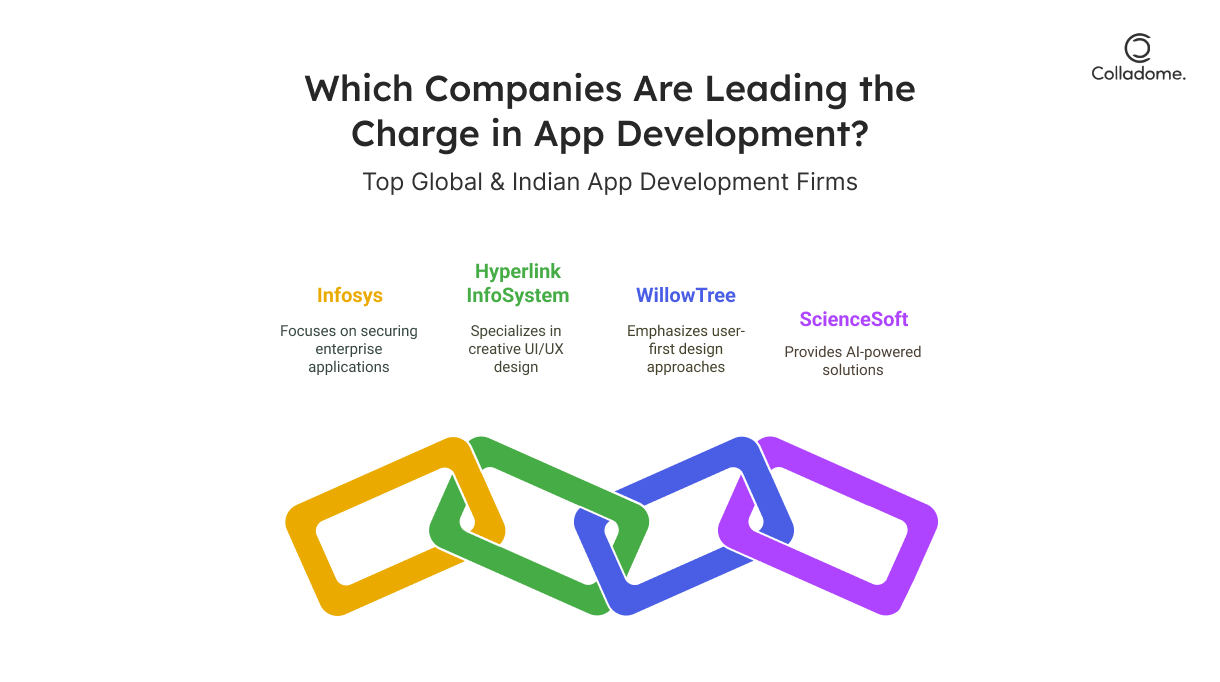
- Global App Downloads: Surpassed 250 billion in 2023 and climbing. (source)
- App Revenue: Over $693 billion in 2024, projected to reach $935 billion by 2025. (source)
- User Preferences: 70% of users prefer apps over mobile websites. (source)
- AR/VR Integration: The market is growing at a CAGR of 25%. (source)
- Low-Code Platforms: Adoption surged by 40% in 2023, simplifying app development. (source)
Conclusion
Mobile apps are no longer just digital accessories; they’re the lifeblood of the digital economy. Whether you’re a startup with big dreams or an enterprise looking to level up, apps are the key to unlocking endless possibilities. With new tech like AI, AR/VR, and low-code platforms, the playing field is more exciting than ever. To stay ahead of the competition in 2025, understanding the latest mobile app development trends and tools is crucial.
When you partner with the right app development companies and use the best mobile software, you don’t just create an app—you build a lasting connection with your audience. Apps are now part of everyday life, shaping user behavior and changing industries. So, it’s time to stop dreaming and start doing!
At Colladome, we’re not just about developing apps; we’re about crafting experiences that push boundaries and set new benchmarks. We understand that mobile app development is more than just a project—it’s a step toward redefining how businesses interact with customers. With our expertise and focus on innovation, we help you choose the right mobile app development software and work with the best app developers to ensure your app isn’t just another download but a game-changer.
Call to Action
The future is built on mobile apps, and it’s time to get your slice of the action. Partner with the top mobile app development companies today and start building the app that will redefine your business. Whether you’re a startup or an established enterprise, Colladome is your perfect partner in turning your vision into an innovative solution. Don’t just wait for the future—build it with us.








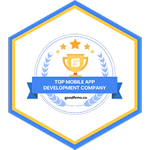

3 Responses
Can you be more specific about the content of your article? After reading it, I still have some doubts. Hope you can help me.
Can you be more specific about the content of your article? After reading it, I still have some doubts. Hope you can help me.
I don’t think the title of your article matches the content lol. Just kidding, mainly because I had some doubts after reading the article.